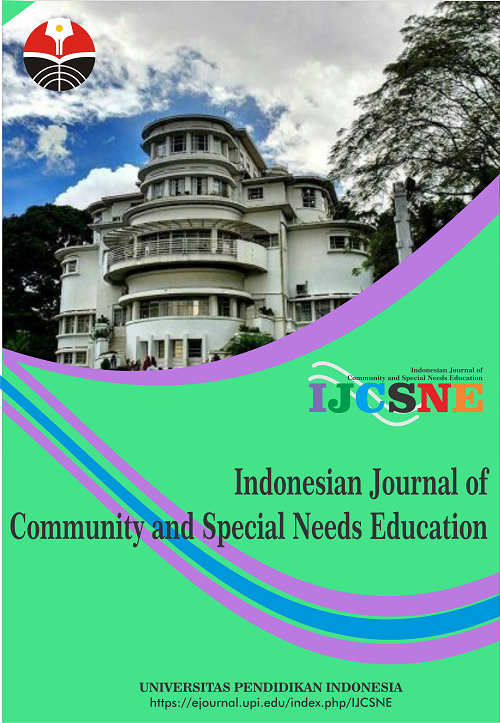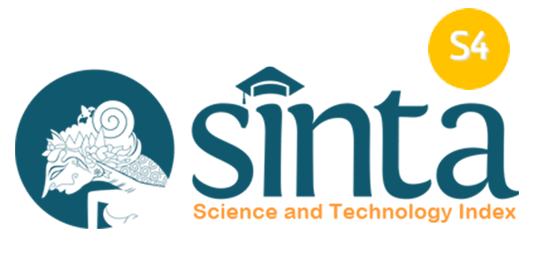Assessment and Identification Tools for Gifted and Talented Learners: A Comprehensive Review
Abstract
Identifying gifted and talented learners remains a complex task due to the multifaceted nature of giftedness and the absence of a universally accepted definition. This paper presented a comprehensive review of assessment and identification tools employed in gifted education, categorizing them into ability tests, achievement tests, creativity tests, nominations, and portfolios. Using a systematic literature review approach, the study examined the implications, strengths, and challenges associated with each tool, emphasizing issues such as cultural bias, ceiling effects, and the need for multidimensional evaluation. The findings highlighted that while standardized measures provided valuable cognitive and academic data, they should be complemented by qualitative methods to ensure equitable identification across diverse populations. The paper recommends adopting a holistic, multidisciplinary framework supported by trained assessors to address the limitations of single-method approaches. This integrated strategy is essential for recognizing and nurturing the full range of abilities among gifted learners, thereby maximizing their academic and personal potential.
Keywords
Full Text:
PDFReferences
Abu-Hamour, B., Al Hmouz, H., Mattar, J., and Muhaidat, M. (2012). The use of Woodcock-Johnson tests for identifying students with special needs-a comprehensive literature review. Procedia-Social and Behavioral Sciences, 47, 665-673.
Acar, S., Sen, S., and Cayirdag, N. (2016). Consistency of the performance and nonperformance methods in gifted identification: A multilevel meta-analytic review. Gifted Child Quarterly, 60(2), 81-101.
Alfaiz, F. S., Pease, R., and Maker, C. J. (2020). Culturally responsive assessment of physical science skills and abilities: Development, field testing, implementation, and results. Journal of Advanced Academics, 31(3), 298-328.
Brown, S. W., Renzulli, J. S., Gubbins, E. J., Siegle, D., Zhang, W., and Chen, C. H. (2005). Assumptions underlying the identification of gifted and talented students. Gifted child quarterly, 49(1), 68-79.
Brulles, D., and Winebrenner, S. (2011). The schoolwide cluster grouping model: Restructuring gifted education services for the 21st century. Gifted Child Today, 34(4), 35-46.
Callahan, C. M., Azano, A., Park, S., Brodersen, A. V., Caughey, M., and Dmitrieva, S. (2022). Consequences of implementing curricular-aligned strategies for identifying rural gifted students. Gifted Child Quarterly, 66(4), 243-265.
Cao, T. H., Jung, J. Y., and Lee, J. (2017). Assessment in gifted education: A review of the literature from 2005 to 2016. Journal of Advanced Academics, 28(3), 163-203.
Cao, T. H., Jung, J. Y., and Lee, J. (2017). Assessment in gifted education: A review of the literature from 2005 to 2016. Journal of Advanced Academics, 28(3), 163-203.
Carman, C. A., Walther, C. A., and Bartsch, R. A. (2020). Differences in using the Cognitive Abilities Test (CogAT) 7 nonverbal battery versus the Naglieri Nonverbal Ability Test (NNAT) 2 to identify the gifted/talented. Gifted Child Quarterly, 64(3), 171-191.
Coronado-Hijón, A. (2015). Aplicación Contextualizada Del Test De Pensamiento Creativo De Tor Rance (TTCT). Revista española de orientación y psicopedagogía, 26(1), 70-82.
Cropley, A. J. (1996). Recognizing creative potential: An evaluation of the usefulness of creativity tests. High Ability Studies, 7(2), 203-219.
Farahian, M., and Avarzamani, F. (2018). The impact of portfolio on EFL learners’ metacognition and writing performance. Cogent Education, 5(1), 1450918.
Ford, D. Y., and Harmon, D. A. (2001). Equity and excellence: Providing access to gifted education for culturally diverse students. Journal of Secondary Gifted Education, 12(3), 141-147.
Frost, M. H., Reeve, B. B., Liepa, A. M., Stauffer, J. W., Hays, R. D., and Mayo/FDA Patient‐Reported Outcomes Consensus Meeting Group. (2007). What is sufficient evidence for the reliability and validity of patient‐reported outcome measures?. Value in Health, 10, S94-S105.
Gilmore, L., and Campbell, M. (2009). Competence in intelligence testing: a training model for postgraduate psychology students. The Educational and Developmental Psychologist, 26(2), 165-173.
Hadaway, N., and Marek‐Schroer, M. F. (1992). Multidimensional assessment of the gifted minority student. Roeper Review, 15(2), 73-77.
Hanif, M., Khan, T. A., Masroor, U., and Amjad, A. (2017). Development of online RAW achievement battery test for primary level. Cogent Education, 4(1), 1290332.
Hodges, J., Tay, J., Maeda, Y., and Gentry, M. (2018). A meta-analysis of gifted and talented identification practices. Gifted child quarterly, 62(2), 147-174.
Kaufman, J. C., Plucker, J. A., and Russell, C. M. (2012). Identifying and assessing creativity as a component of giftedness. Journal of Psychoeducational Assessment, 30(1), 60-73.
Kettler, T., and Bower, J. (2017). Measuring creative capacity in gifted students: Comparing teacher ratings and student products. Gifted Child Quarterly, 61(4), 290-299.
Kūkea Shultz, P., and Englert, K. (2021, July). Cultural validity as foundational to assessment development: An indigenous example. In Frontiers in Education, 6, 701973.
Larroder, A., and Ogawa, M. (2015). The development of a self-evaluation checklist for measuring Filipino students’ science giftedness. Asia-Pacific Science Education, 1(1), 1-20.
Lee, C. S., Huggins, A. C., and Therriault, D. J. (2014). A measure of creativity or intelligence? Examining internal and external structure validity evidence of the remote associates test. Psychology of Aesthetics, Creativity, and the Arts, 8(4), 446.
Long, H., Kerr, B. A., Emler, T. E., and Birdnow, M. (2022). A critical review of assessments of creativity in education. Review of Research in Education, 46(1), 288-323.
Luria, S. R., O'Brien, R. L., and Kaufman, J. C. (2016). Creativity in gifted identification: Increasing accuracy and diversity. Annals of the New York Academy of Sciences, 1377(1), 44-52.
Noor, B. (2023). Pressure and perfectionism: A phenomenological study on parents’ and teachers’ perceptions of the challenges faced by gifted and talented students in self-contained classes. In Frontiers in Education, 8, 1225623.
Oak, E., Viezel, K. D., Dumont, R., AND Willis, J. (2019). Wechsler administration and scoring errors made by graduate students and school psychologists. Journal of Psychoeducational Assessment, 37(6), 679-691.
Peters, S. J. (2022). The challenges of achieving equity within public school gifted and talented programs. Gifted Child Quarterly, 66(2), 82-94.
Peters, S. J. (2022). The challenges of achieving equity within public school gifted and talented programs. Gifted Child Quarterly, 66(2), 82-94.
Peters, S. J., and Gentry, M. (2012). Group-specific norms and teacher-rating scales: Implications for underrepresentation. Journal of Advanced Academics, 23(2), 125-144.
Pfeiffer, S. I. (2012). Current perspectives on the identification and assessment of gifted students. Journal of Psychoeducational Assessment, 30(1), 3-9.
Rambo-Hernandez, K. E., and Warne, R. T. (2015). Measuring the outliers: An introduction to out-of-level testing with high-achieving students. Teaching Exceptional Children, 47(4), 199-207.
Renzulli, J. S. (1999). What is this thing called giftedness, and how do we develop it? A twenty-five year perspective. Journal for the Education of the Gifted, 23(1), 3-54.
Saadu, U.T., Obafemi, K.E., and Oluwakemi, A.C. (2024). Primary school teachers’ competence level in the early identification of gifted children. Indonesian Journal of Community and Special Needs Education, 4(1), 1-10.
Scheiber, C. (2016). Do the Kaufman tests of cognitive ability and academic achievement display construct bias across a representative sample of Black, Hispanic, and Caucasian school-age children in grades 1 through 12?. Psychological Assessment, 28(8), 942.
Shaunessy, E., Karnes, F. A., and Cobb, Y. (2004). Assessing potentially gifted students from lower socioeconomic status with nonverbal measures of intelligence. Perceptual and Motor Skills, 98(3_suppl), 1129-1138.
Staus, N. L., O'Connell, K., and Storksdieck, M. (2021, July). Addressing the ceiling effect when assessing STEM out-of-school time experiences. In Frontiers in Education, 6, 690431.
Sternberg, R. J. (2010). Assessment of gifted students for identification purposes: New techniques for a new millennium. Learning and Individual Differences, 20(4), 327-336.
Torrance, E. P. (1984). The role of creativity in identification of the gifted and talented. Gifted Child Quarterly, 28(4), 153-156.
Van den Berg, Y. H., Lansu, T. A., and Cillessen, A. H. (2015). Measuring social status and social behavior with peer and teacher nomination methods. Social Development, 24(4), 815-832.
VanTassel-Baska, J. (2001). Assessment of gifted student learning in the language arts. Journal of Secondary Gifted Education, 13(2), 67-72.
Warne, R. T. (2012). History and development of above-level testing of the gifted. Roeper Review, 34(3), 183-193.
Wellisch, M., and Brown, J. (2012). An integrated identification and intervention model for intellectually gifted children. Journal of Advanced Academics, 23(2), 145-167.
Worrell, F. C., and Erwin, J. O. (2011). Best practices in identifying students for gifted and talented education programs. Journal of Applied School Psychology, 27(4), 319-340.
Wright, L., and Borland, J. H. (1993). Using early childhood developmental portfolios in the identification and education of young, economically disadvantaged, potentially gifted students. Roeper Review, 15(4), 205-210.
Yassin, S. F. M., Ishak, N. M., Yunus, M. M., and Abd Majid, R. (2012). The identification of gifted and talented students. Procedia-Social and Behavioral Sciences, 55, 585-593.
Zimmerman, B. J., and Dibenedetto, M. K. (2008). Mastery learning and assessment: Implications for students and teachers in an era of high‐stakes testing. Psychology in the Schools, 45(3), 206-216.
DOI: https://doi.org/10.17509/ijcsne.v6i1.89074
Refbacks
- There are currently no refbacks.
Copyright (c) 2025 Universitas Pendidikan Indonesia

This work is licensed under a Creative Commons Attribution-ShareAlike 4.0 International License.















